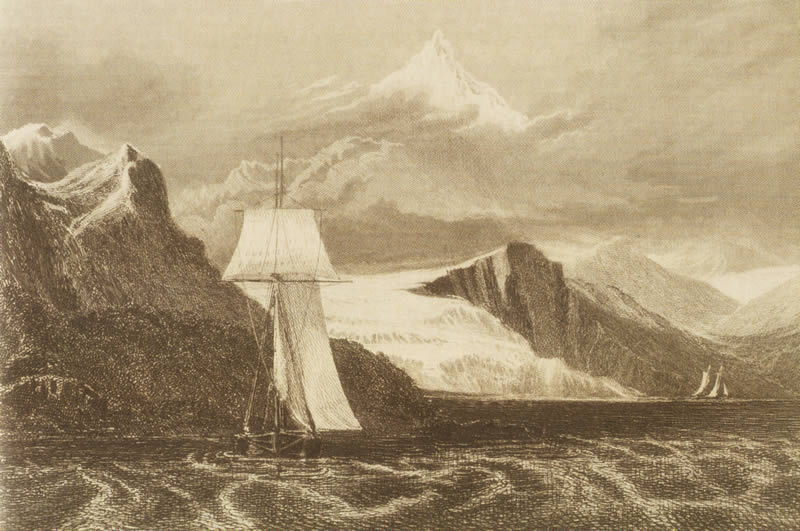On February 6, 1836, Charles Darwin arrived at the port of Hobart in Van Diemen’s Land, now known as Tasmania. Leaving Sydney behind six days before, the HMS Beagle sailed up the Derwent River on a cold and squally day. With the mouth of the river bearing the name Storm Bay, Darwin wryly noted that the weather justified the name.
Like many naturalists and navigators of the time, Darwin’s first impressions of Van Diemen’s Land proved to be incorrect. He described the shoreline as having “extensive Basaltic platforms…” Later studies confirmed that these rock formations were in fact dolerite.
Darwin spent around ten days examining the geology of the countryside, noting that the climate was much damper than that of Sydney. One of these forays took him to the summit of Mt. Wellington, where he noted huge Eucalyptus trees and gigantic ferns in the ravines.
During his visit, Darwin also found time to catch up with members of the English Society, including George Frankland and Sir Alfred Stephen.
The visit to Van Diemen’s Land was a small part of a 5-year journey for the HMS Beagle, as she circumnavigated the globe. It was in fact in the final year of the voyage, with the ship arriving back home in October 1836.
The publication of Darwin’s journal became known as “The Voyage of the Beagle” and garnered Darwin widespread respect. He was to note later that this journey was the most important event of his life and it determined his whole career.

